Alarm system buying guide
Alarm system buying guide
Introduction
Alarm systems are a useful security tool for protecting homes and businesses. They can deter intruders and raise the alarm when a burglary is taking place. But there are different types of alarm systems available. So, before you buy, it’s worth doing your research to ensure you get a suitable alarm system for your needs.
This buying guide tells you all you need to know about alarm systems. It covers how alarm systems work and the types available. We also give tips on installing and maintaining alarm systems and things to consider before buying.
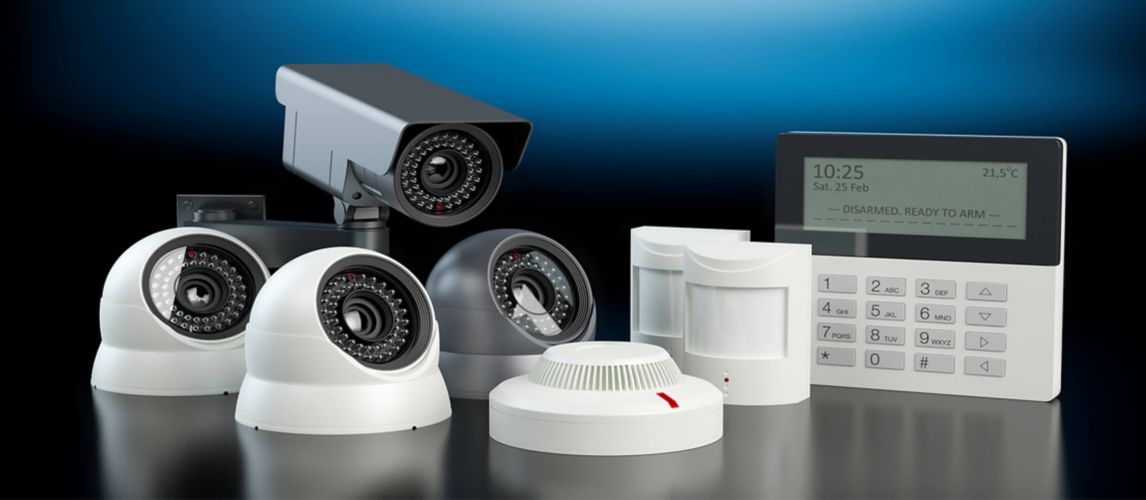
How Alarm Systems Work
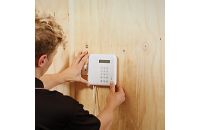
Burglar alarm systems are made up of several components, which all work together:
A control panel: this is a small box usually mounted to the wall inside an entrance hall. It contains a keypad that activates and deactivates the alarm when a pin number is entered. All the other components in the alarm system are connected to the control panel. Some smart alarms don’t have control panels. Instead, the alarm is controlled through an app on a smartphone, tablet or smart speaker. But some smart alarms have both options.

Open/close sensors: these sensors are placed on entrance doors and windows around a property. They’re made up of two parts to form a connection when a door or window is closed. The siren will go off if the connection is broken (i.e., the door or window is opened) while the alarm is activated.
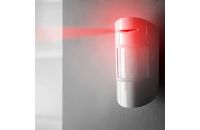
Motion detectors: these sensors are placed inside the property, at entrances, or in rooms. PIR (passive infrared) sensors are a common type of motion sensor. Motion sensors work by using infrared technology to sense body heat. If body heat is detected while the alarm is activated, it triggers the siren
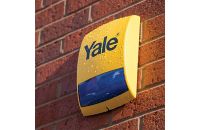
A siren: the siren is the part of the alarm system that makes a loud sound when triggered by the open/close sensors or motion detectors. The siren is contained within a box mounted to the wall on the outside of the property. It's usually a bright colour to make it visible, to deter intruders.
Most alarm systems also have tamper alerts. A tamper alert is a small device contained inside the open/close sensors and motion detectors that trigger the alarm if anyone tries to meddle with them to deactivate the system.
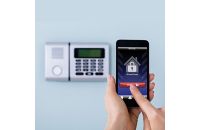
Alarm systems come in wireless and wired options, and they each have their pros and cons.
Wireless burglar alarms: Wireless alarm systems use battery-powered sensors to communicate with the control panel using radio signals. This makes them easy to install for a competent DIYer because there are no wires to run around the property. However, they can be less reliable than wired alarm systems. For example, the radio signal may be too weak to work if there’s a large distance between the sensor and control box. And the batteries must be periodically replaced. A dead battery at the wrong time will make the system useless.
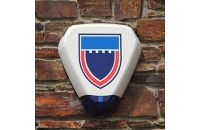
Wired burglar alarms: A wired alarm system uses wires to connect all the open/close sensors, motion detectors and siren to the control panel. These alarm systems are more complicated and challenging to install because the wires need to be hidden away. However, they can be more reliable than wireless alarm systems, particularly in large properties, due to the distance between sensors and the control panel. They can also be cheaper to buy and maintain in the long run because there are no batteries to keep replacing.
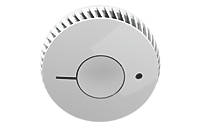
Fire and carbon monoxide alarms
Fire and carbon monoxide alarms are lifesaving devices essential to every home and business. There are several types of fire alarm systems and carbon monoxide alarms available:
- Battery-powered alarms run on a battery and are the easiest type to install because they simply need to be screwed to the ceiling. But, if the battery runs out, the alarm is useless. However, most play an audible beep to warn when the battery is low.
- Wired alarms are connected to the electricity supply. Installation may need to be carried out by an electrician, but once they’re installed, they’re more reliable.
- Smart fire and carbon monoxide alarms can be wired or battery powered. Their real benefit comes from their ability to be connected to a smart device through WiFi. If smoke or carbon monoxide is detected while the user is away from the property, an alert will be sent to their smartphone, which means they can take immediate action.
Types of Burglar Alarm System
There are several types of burglar alarm systems available. It’s important to understand their differences because each system provides a different level of response if the alarm is triggered.
Smart security systems
A smart security alarm system is like a traditional burglar alarm, but with the added benefit of internet connectivity. The system uses WiFi to connect all the components to an app on a smartphone or tablet. Once set up, it can be activated and deactivated through the app or using voice commands through a smart speaker. If the user is away from their property when the alarm is triggered, they'll receive a notification on their smartphone so immediate action can be taken.
Smart alarms are designed for DIY installation, so they’re easy to install too. They’re mainly wireless - although the control panel will need to be wired into the electricity supply unless you buy a completely wire-free, battery-powered version.
If you're thinking about purchasing a smart alarm system, one thing to consider is whether it will be compatible with other smart devices already installed. For example, if there's already an Alexa smart speaker, check the smart alarm system says 'works with Alexa’.
Smart alarms can also link to other smart security devices, such as smart CCTV cameras. This is useful because if the alarm is triggered, the user can check live CCTV footage on their phone to see if it’s really a burglary or a false alarm.
Check out our smart security guide to find out more.
Bell-only burglar alarms
A bell-only burglar alarm system does nothing except sound the siren when the alarm is triggered. It doesn't alert the owner to a potential break-in if they are away from the property, so only people nearby will be aware.
These alarms are useful because having any type of alarm box visible on the outside of a property is a deterrent. And if an intruder does break in, the sound may scare them away. They're also reliable, and easy to install for a DIYer.
However, bell-only burglar alarms rely on neighbours or passers-by to investigate or call the police. And, people often tend to ignore these alarms, thinking it’s a false alarm. Or they may be wary of investigating themselves. So, there’s no guarantee that any action will be taken if the alarm is triggered.
Dialler burglar alarms
A dialler burglar alarm sounds the siren and automatically dials a nominated telephone number when the alarm is triggered. Most allow the user to program a list of several phone numbers which are dialled in priority order. So, if the first person doesn't answer, it will keep dialling until someone does.
There are two types of dialler alarm systems. One uses a landline to dial the numbers (called speech diallers), and the other uses a mobile network (called GSM diallers). But speech diallers are being phased out as the phone network they use is being switched off in 2025.
The advantage of a dialler burglar alarm is that someone will be alerted if the alarm is triggered, so action can be taken – whether that’s to investigate or call the police. The disadvantages are that there’s a risk the nominated contacts may be unavailable. Or, with a GSM dialler, a weak mobile signal will affect how well it works
Monitored alarms
A contracted monitoring alarm system is linked up to an outside company (called a receiving centre) who are alerted if the alarm is triggered. The response is carried out by a human rather than an automated system, providing added confidence that action will be taken.
One disadvantage of a monitored alarm system is the ongoing costs of a monthly subscription or annual fee. Also, most monitoring companies will insist on installing the system themselves, at the owner’s expense, because the installation must conform to specific standards.
The action taken by the contracted monitoring company can vary depending on the level of security needed, as follows:
Keyholder monitoring
When the alarm is triggered, the contracted monitoring company receives a notification. A person from the company will then either call or text the property owner or a nominated keyholder. It's the responsibility of the person who has been contacted to investigate or call the police. Nominated keyholders usually need to live within a 20-minute drive to the property and have access to it.
Police response
When the alarm is triggered, a person from the monitoring company will check if the alarm has been triggered by two types of indicators, such as a contact sensor and motion detector. If it has, they'll contact the police. This is so there's more certainty that it's an actual break-in and not a false alarm, and police time isn't wasted. Unfortunately, paying for this service doesn't guarantee a police response, as it will depend on their availability at the time of a call.
Private response
Some contract monitoring companies offer a private response service. When the alarm is triggered, a person from the monitoring company will call a private security team to investigate the property. This type of response is most suited to large homes or businesses with many valuables.
Installing an Alarm System
Home alarm installation can often be carried out by a DIYer, but some systems may need professional installation.
For example, wireless and smart alarm systems are easy to install for DIYers due to their lack of hard-wiring requirements. The hardest part is installing the siren, which must be fitted high-up on the outside of the property. Also, most control panels are mains and battery-powered. So, an electrician may be needed to connect it to the electricity supply. But all other components, such as the open/close sensors and motion detectors, simply need to be screwed or stuck (with self-adhesive strips) into place.
Wired systems are more challenging to install because every component must be connected to the control panel with wires. So, these are best installed by a competent DIYer or a registered, trusted professional. However, some alarm companies may insist on professional installation, particularly if they provide a monitoring service.
Here are some tips on the best way to install the components of an alarm system:
- Installing the control panel: the control panel should be mounted to a wall at eye level, just inside the main entrance. It must be easily accessible so people can activate/deactivate it as they leave or enter the property.
- Installing the siren: the siren should be mounted on an outside wall of the property. Choose a spot that’s visible from the front of the property to deter intruders. And place it high enough so that it can’t be easily reached and tampered with. If it’s a wireless alarm system, the batteries will need to be changed periodically, so it should be in a spot that can be accessed safely. If a ladder is required to reach it, ensure the ground underneath is flat and solid.
- Installing the open/close sensors: a contact sensor should be installed on every external door and all ground floor windows as a minimum. For extra security, they can also be installed on first-floor windows. Place the sensor at the top on doors where they can't get accidentally knocked off. They can be placed anywhere on windows as long as the connection between the two parts will be broken when the window is open.
- Installing the motion detectors: the best place to put motion sensors is at all access points to the property. Also, put them in high-risk rooms where intruders would most likely look for valuables. Place them on the wall, in the corner of the rooms, approximately 1.2m from the ground. This means they'll capture people moving around but can't accidentally get knocked.
If you plan to install a wired system, consider where the power sources are when deciding where to position all the components.
Maintaining Your Alarm System
Regular maintenance of an alarm system is vital to ensure it remains in working order, has no defects, and reduces the risk of false alarms.
We recommend carrying out a simple maintenance check once per year, as follows
- Check there are no corroded wires (wired systems)
- Check for damage to plastic exteriors on all sensors
- Change all batteries
- Check all sensors are still securely in place (particularly if they’ve been mounted with adhesive tape)
- Clean sensors to keep them free from dust and debris, which can cause false alarms
If the alarm is a smart alarm, ensure any system updates are carried out as soon as they are available.
Contract monitoring alarm companies often provide a maintenance service, but it may come at an extra cost and call-out fees. They'll usually check the alarm once per year or twice per year with a police response contract.
5 Things to Consider Before Buying an Alarm System
We've covered the most essential information you need to know before buying an alarm system in this guide. But here are five other things to consider:
1. What sensors do you need?
Most alarm systems come with several motion detectors and open/close sensors. Before you buy, consider how many sensors you’ll need to cover the main entrances to the property and all ground floor windows as a minimum. Then think about the number of motion detectors you’ll need to cover the most high-risk areas. If you can’t find a system that includes the correct number of sensors, purchase one with less, and buy extra sensors separately. Just check to make sure they’re compatible with the system.
2. What about additions like cameras?
Adding CCTV to a burglar alarm system provides an extra layer of security. A CCTV camera will record footage of a burglary in action and may help to identify intruders. A smart CCTV and burglar alarm combination works even better, as an alert is sent to the property owner’s smartphone if the alarm is triggered when they’re away. They can then check live camera footage to see if there really is a burglary or if it’s a false alarm and take immediate action if necessary. Check out our CCTV and security camera buying guide to find out more.
3. How many logins are needed?
As smart alarm systems can be controlled from smart devices, the user must set up an account with the manufacturer. So, something to consider is, how many people will require access to the account? With a home alarm, ideally, all adults living in the home will need a separate login. On the other hand, with a business property, quite a few people in a business may need access. The number of logins each alarm system will allow varies, so always check before you buy
4. Are keypads and fobs needed?
Most alarm systems come with a keypad (although some smart alarms don't). But another useful addition to the system is a fob. These are small devices that usually come on keyrings. They have a built-in radiofrequency system that communicates with the alarm's control panel to activate and deactivate the alarm instead of using the keypad. Fobs are useful if cleaners or dog walkers, for example, need to gain access to the property. Smart alarm systems that don’t come with keypads often have remote controls instead. So, the alarm can be controlled either through the remote or a smart device. However, visitors to the home won’t be able to use a smart device, and a remote control isn’t very convenient if they can’t find it. So, in this instance, a fob would be essential.
5. Smart compatibility
If the home already has other smart devices installed (i.e., smart lights, plugs, etc.), the smart alarm system can be connected to them to create automation. For example, you can set up an automation where lights and a radio turn on if the alarm is triggered. If there are no other smart devices installed yet, consider what may be needed in future. Either way, always check that smart devices are compatible with each other.
